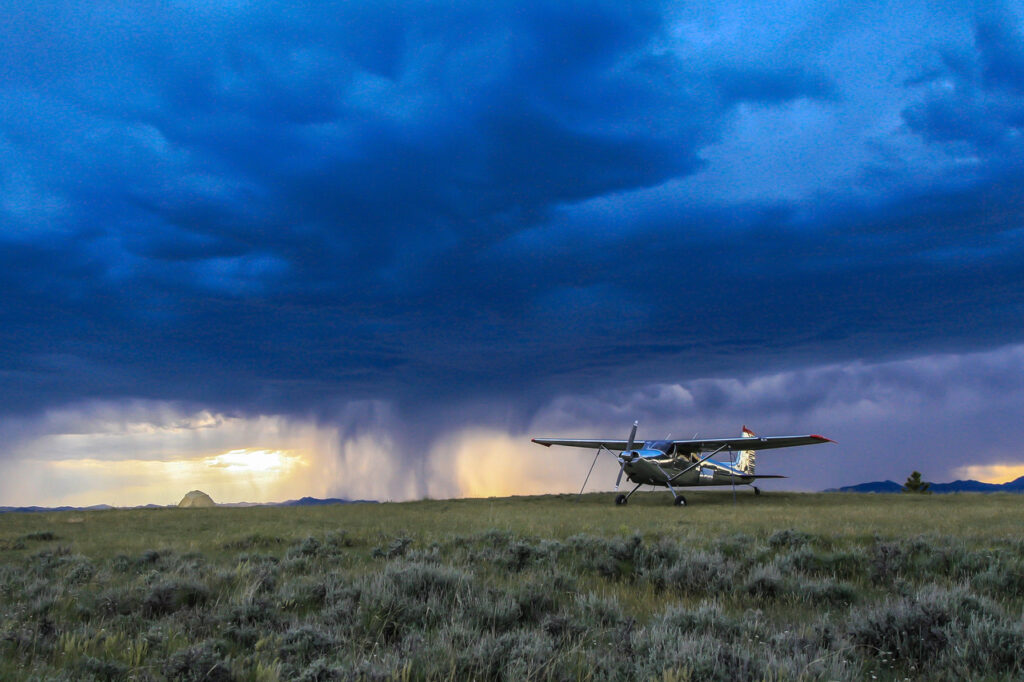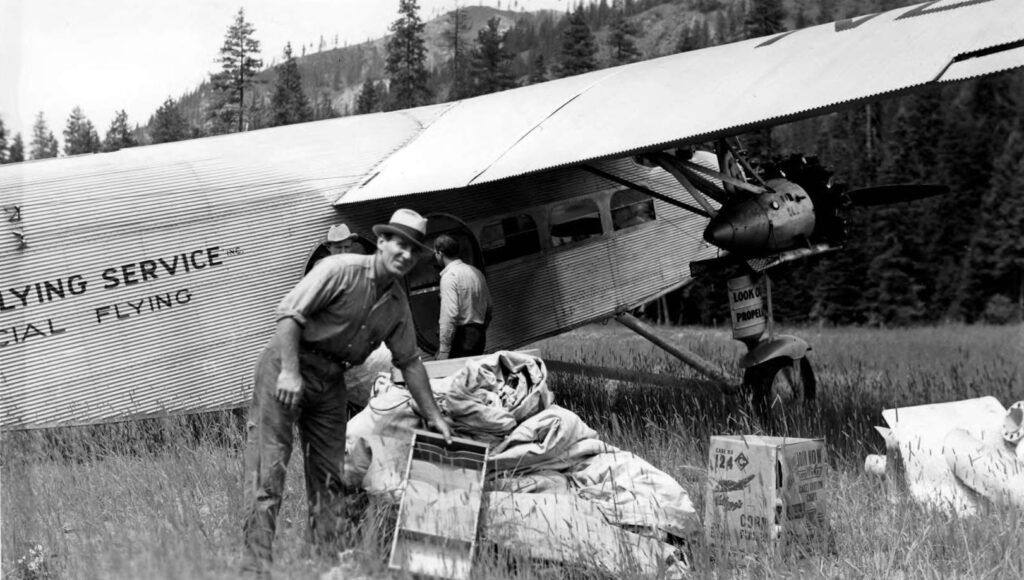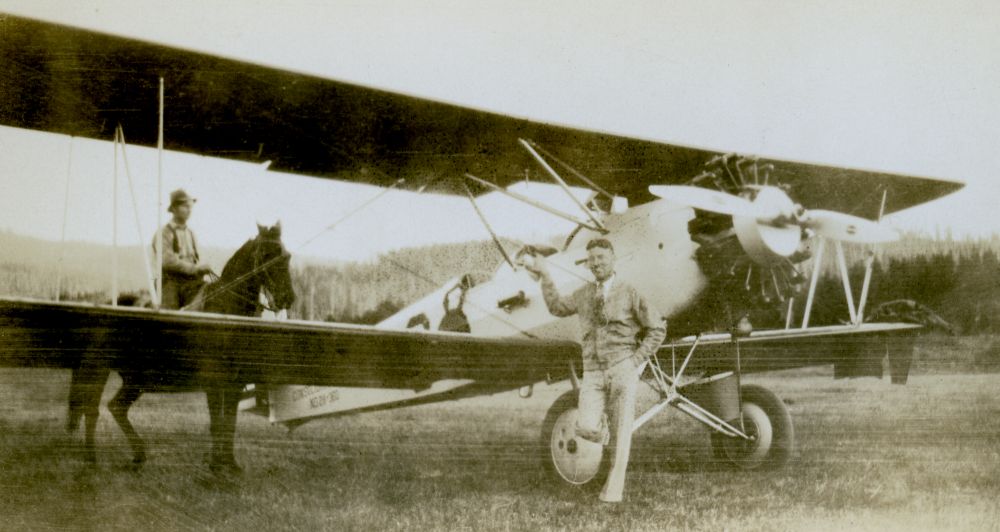WORTH THE READ: CRISTA WORTHY GUEST EDITORIAL
Our many RAF supporters have such vast and varied experience, and we’re capturing some of their words of wisdom to share with you. This guest editorial is by Crista Worthy, a pilot, freelance writer, and editor.
Our Aviation Inheritance:
You, and other pilots who support organizations like the Recreational Aviation Foundation (RAF), Idaho Aviation Association (IAA), and Montana Pilots Association (MPA) know these organizations are dedicated to preserving recreational airstrips across the U.S. and in their respective states. But who first built them, and why? And why are they still here? Follow my journey of discovery, summarized below, and your understanding and appreciation of these places will grow.
Based in Santa Monica, Calif., we’d flown our Robertson-STOL-equipped C-210 to 44 states, but never Idaho or the backcountry until August 2001 when I discovered Galen Hanselman’s book, Fly Idaho! On our first trip, we camped at Wilson Bar and swam in the Salmon River. At Johnson Creek, I watched huge Chinook salmon spawn in the shallows. I wept; those fish had overcome giant dams and fought their way 900 miles inland and a mile above sea level, for this, their final act of survival, to perpetuate their line. And at Fish Lake, we spent the day watching cow moose forage in the lake, calves at their sides. These were among the happiest days of my life.
I joined the above organizations, made more trips to Idaho, and, after seeing a spectacular photo of RAF supporter Michael Todd’s silver Skywagon in the Missouri Breaks during a lightning storm, wrote letters in support of the Missouri Breaks airstrips. By the time we moved to Idaho in 2011 I was Managing Editor of Pilot Getaways magazine. I began producing the IAA’s monthly Flyline and became deeply involved with the recreational aviation community.And then Arcadia Publishing asked me to write a book about Idaho’s aviation history.
Wow! In the process of gathering historic photos and stories for my book Images of Aviation: Idaho Aviation, I “met” an amazing array of courageous, hard-working, innovative, and often hilarious characters: the men and women who used aviation as a tool to make their living in the wilderness. You see, we use these airstrips for recreation. But they were built for work.
In 1910, a terrible drought struck the West. Late that summer over 1,000 fires converged into the “Big Burn,” which scorched 3.25 million acres in just 36 hours, destroying towns, wasting 8 billion board feet of timber, and killing some 85 people. The USFS turned to aviation for help. In 1922, WWI veteran Nick Mamer, an Air National Guard pilot out of Spokane, began flying patrols to report forest fires. 100 years ago this year, he landed at Stonebraker Ranch in Idaho’s Chamberlain Basin to make a deal with William Stonebraker, a hunting outfitter. Mamer flew hunters into the ranch for Stonebraker, and commercial backcountry aviation began.
But it didn’t stop there. Mines like the Stibnite in Idaho had to shut down every winter, but once pilots like Mamer and A.A. Bennett figured out how to put skis on airplanes, supplies and people could be ferried in and out year-round. Airstrips were built and new planes like the Zenith, in which Bennett carried everything from mining equipment to a piano and even a cow, were designed.
The USFS built some 5,000 fire lookouts in the 1930s, but they also built airstrips so pilots could fly firefighters into the forest. Mamer taught Bob Johnson and Penn Stohr to fly, and soon Johnson Flying Service out of Missoula had a fleet of sturdy aircraft and skilled pilots who flew in lumber, mail, and literally the kitchen sink so homesteaders could build ranches for themselves and visitors. Those primitive airstrips were lifelines. Bill Gowen made the first-ever landing at Cabin Creek in 1931 to rescue a critically-injured man. An old miner, hiding in the trees, watched the Travel Air 6000 take off from the hastily-cleared field and ran to the backcountry phone, exclaiming, “Slim! It’s all over for that plane! It’s gonna crash! The wings weren’t flapping!” He’d never seen an airplane.
In 1935, the Zimmerly brothers flew 60,000 pounds of freight, trained 20 students, and carried 3,600 passengers. In the 1950s, Jim Larkin rescued 4 prize horses from Morgan Ranch in the winter. Bob Woods regularly flew horses and ponies into Pistol Creek for the little girls who summered there.
This is just a tiny peek into the legacy you have inherited, and that the 1980 Central Idaho Wilderness Act, and subsequently the RAF, IAA, and MPA have preserved. Enjoy!

Crista V. Worthy lives in Hidden Springs, Idaho and is Editor of “The Flyline,” the monthly publication of the Idaho Aviation Association, as well as the Washington Seaplane Pilots Association newsletter. A freelance writer and editor with land and seaplane ratings, she has authored over 1,000 magazine articles, edited several books, and is the author of “Images of Aviation: Idaho Aviation” with 277 photos. The book is available on Amazon or from cristaworthy@hotmail.com.





Photos courtesty of Mike Todd, Crista Worthy, and University of Idaho Library.
Submitted July 31, 2025

Knowing where you came from and how we got to where we are is equally important to knowing where you are going. These special places didn’t happen on their own. Thank you Crista for the background. So much a part of the story.
You are right, John, thanks for the opportunity.–Crista
Thank you Crista for this article. I find many people are unaware of the history and legacy of aviation in the development of the Backcountry. I have your book and it’s a great resource for impressing those that don’t know.
Thanks Bill!
Great article Crista. I love to hear about our Idaho aviation history.
Thanks Chris, yes, Idaho’s geology and geography combined to make aviation the best way to get into the central part of the state–Crista
Great view into the story behind the places we cherish, Crista! Hope you are well and our paths cross again soon.
Thanks Julie, have a great rest of the summer!–Crista
Pilot Getaways one of the finest aviation magazines. I’ve saved every copy and so glad I did and so sorry it had to end the way it did, it will always be remembered.
Thanks John! I have literally had hundreds of people tell me they miss Pilot Getaways. I’ve considered starting a similar publication, but in the meantime, The Flyline is really a magazine-level publication and I always have a Destinations section in it….and IAA members can access all the old issues as well as the current one…www.IdahoAviation.com.
What a wonderful read! Thanks for providing that history.
You bet, and thanks for reading!–Crista
Great info.
Where can I find more info?
Hi Jim! Feel free to contact me at cristaworthy@hotmail.com.–Crista
Christa, what a beautiful article!!! John and I started flying into Chamberlain in the late 1970’s in our twin bonanza filled with kids and camping “stuff” and loved the magic of the wilderness❤️❤️!! Later we actually flew our P-40 Kittyhawk there to meet friends and camp for a week! We also flew into Moose Creek many times and spent hours fishing and hiking. We knew early on how blessed we are to be surrounded by such raw beauty and how lucky to be able to fly into these mountain strips that are mostly unattainable by car❤️ Your beautifully written story is for sure one that I will read many times !!!
Thank you for all you do to support and preserve aviation in Idaho!!
Sue Paul
Thanks Sue; see you at the Warhawk!-Crista
BTW did you ever see these, about Nat Adams and Robbie Robinson?
https://highsierrapilots.club/271-days-combat/
https://highsierrapilots.club/in-the-navy-november-1942/
Thanks Cristy for the history. You write so well.glad our paths crossed and hopefully they will again in person
Yes Jean Anne, me too, and say hi to Bert and Steve..-Crista